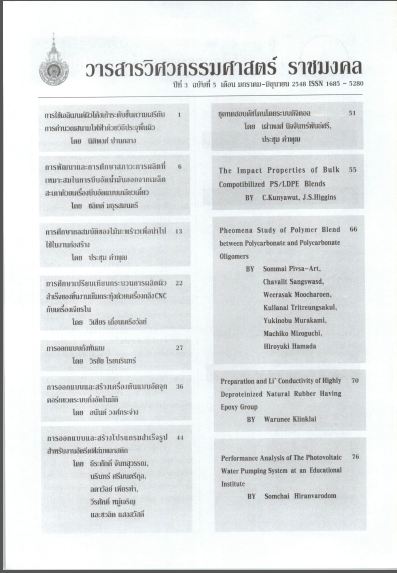Performance analysis of the photovoltaic water pumping system at an educational institute
Main Article Content
Abstract
Photovoltaic (PV) water pumping system is an appropriate way to supply water in locations where access to electric power is an expensive. Solar energy is a logical solution because maximum water demand occurs during periods of maximum sunshine. Due to the fact that the viability of a solar pump depends on a low initial cost and long working period without maintenanace. Energy efficiency and pimplicity are of paramount importance in the design. The PV water pumping system in this work has been installed at Rajamangala Institute of Technology (main campus), Klong 6, Thanyaburi district, Pathumthani province of Thailand. It is mounted on a small farm to supply the water for pouring water on garden plants. The PV pumping system with 490 (W<sup>p</sup>) is able to produce the water averagely of 1,250 liters/day based on the climate data at the design location. The programme computer using visual basic was developed for design PV array sizing and system components.
Article Details
The manuscript, information, content, picture and so forth which were published on Frontiers in engineering innovation research has been a copyright of this journal only. There is not allow anyone or any organize to duplicate all content or some document for unethical publication.
References
Perz Garcia,M et al, Integrated approach to the Feasibility analysis of solar pumping in the agriculture : A case study in Almeria's province, 17 European Photovoltaic Solar Energy Conference, 22-26 October 2001,Munich, Germany, pp 2794-2796.
S.Hiranvarodom, A Comparative Analysis of Photovoltaic Street Lighting Systems Installed in Thailand, 3rd World Conference on Photovoltaic Energy Conversion, 11-18 May 2003, Osaka, Japan, pp. 2478-2481.


